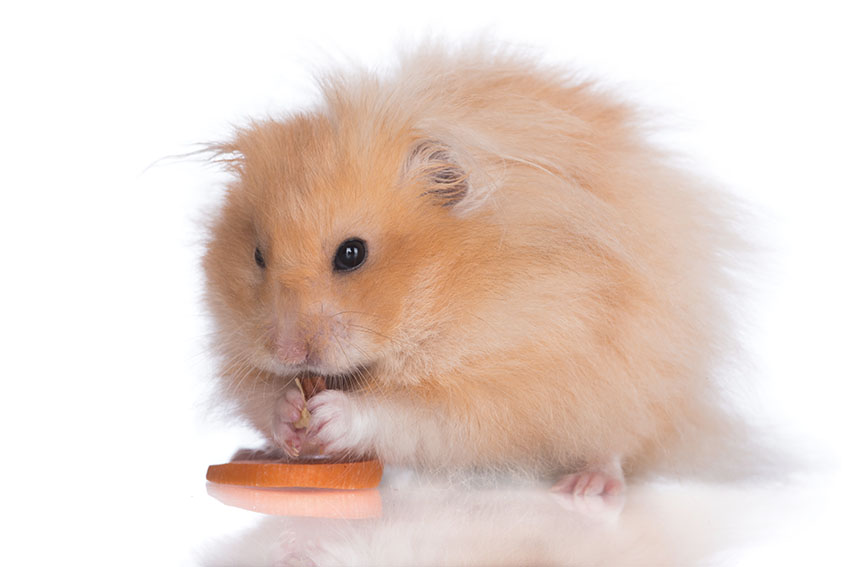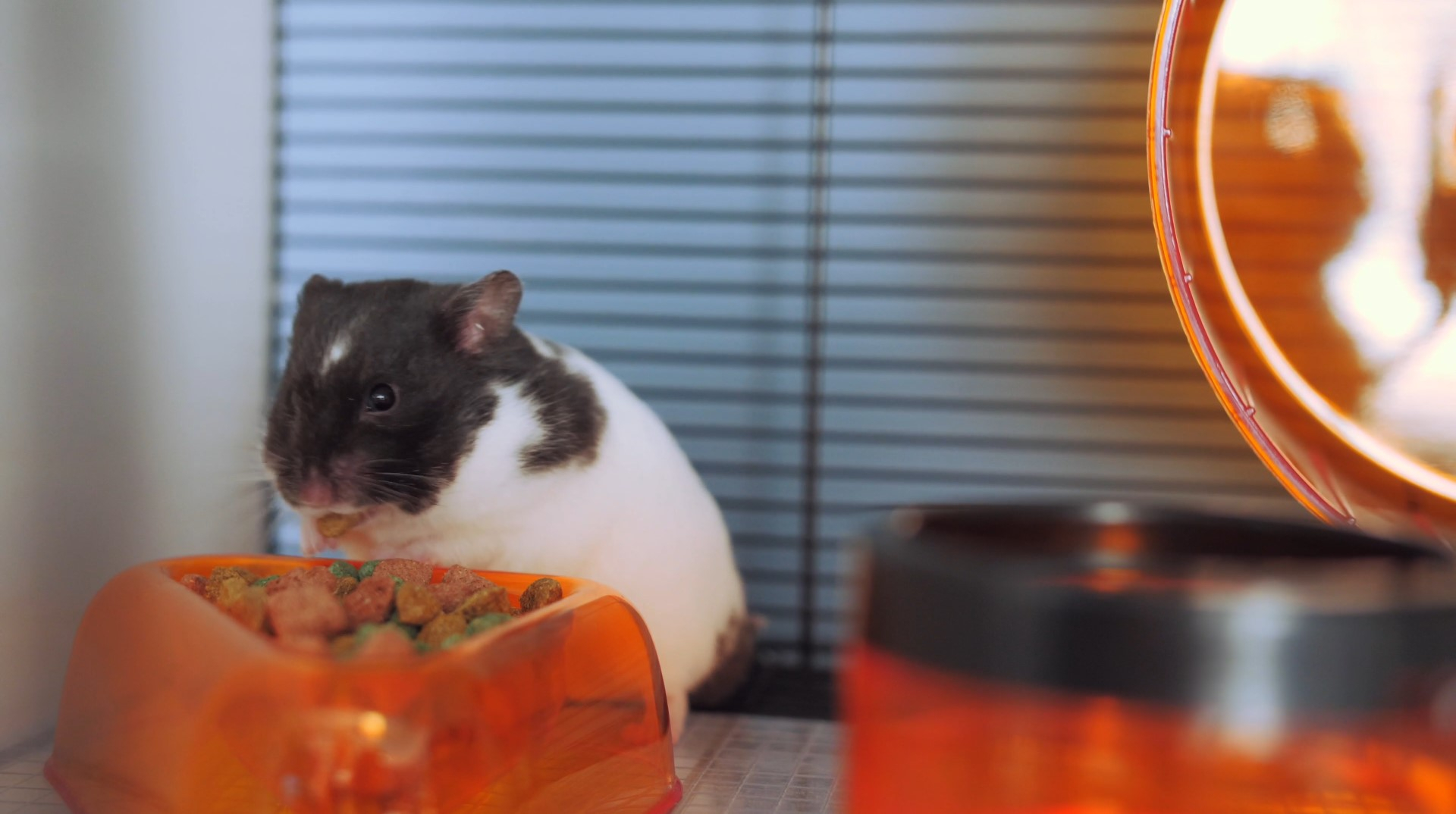Hamsters are known for stuffing their cheeks full of food to carry off and munch on later. This curious but adorable behavior is part of their natural instincts, fueled by the desire to store food should it ever become hard to find. Feeding your hamster is an important part of their care, and your pet hamster will rely on you for their daily rations. But what do hamsters eat? And how often do you need to feed them? Find out the answers to these questions and more when you learn all about feeding your hamster.
What do hamsters eat?
Hamsters can eat a variety of foods, but as with people and other pets, most foods should be offered in moderation. In the wild, hamsters have access to a variety of foods, and will stash their favorites away to save for later. Find out what diet your hamsters are designed to eat, along with what to feed them, and which foods to avoid.

Hamsters love an interesting, varied diet
Hamster diets in the wild
Wild hamsters eat a diverse diet that consists of seeds, grains, insect larvae, and small insects. Hamsters are technically omnivorous, so they need a fair amount of protein in the diet, which they get from bugs in the wild. But, there are protein options available for pet hamsters, sparing you the experience of getting crickets or mealworms from your local pet store.
What to feed your pet hamster
The bulk of your hamster’s diet should consist of quality dry pellets made up of balanced ingredients. Steer clear of the “trail mix” style food, as your hamster will pick out their favorite bits and leave the most nutrient-rich pellets behind. Choose pelleted hamster feed with minimal or no added elements like nuts or seeds.
Hamster treats
A small seed mixture can be fed to your hamster occasionally, but these should not be their sole source of nutrition. Other treats and supplemental foods your hamster can have include:
- Fresh fruits like apples, bananas, or pears
- Vegetables like broccoli, carrots, celery, greens (like spinach or romaine lettuce)
- Cucumbers
- Dandelion
- Clover
- Melon
- Sprouts
- Timothy hay
For protein, you can offer your hamster small amounts of unseasoned scrambled eggs or boiled eggs. The commercially available pellets that you feed your hamster should have protein added in, making supplemental protein more of a treat than a necessity.
All treats should be fed in moderation – no more than 2-3 times per week, and only in small amounts. Too many treats, even fresh fruit and vegetables, can cause digestive upset or create a picky eater in your pet. And, be sure to gather any uneaten treats every morning to prevent mold from forming.

A hamster’s diet should consist primarily of a good dry food
Foods to avoid
There are also foods you should avoid feeding to your hamster. These are foods that are either toxic to hamsters, or can cause digestive issues. When looking for things to offer your hamster, steer clear of:
- Acorns
- Baked goods (unless made specifically for hamsters)
- Citrus fruits
- Dairy products
- Garlic
- Leeks
- Rhubarb
- Onions
- Any unripe or overripe fresh fruit or vegetables
- Processed foods intended for people
If you think your hamster has eaten something they weren’t supposed to, contact your veterinarian right away. Signs of a sick hamster include: lethargy, dull eyes, or diarrhea.
How much do I feed my hamster?
Your hamster’s pelleted food can be left out and fed free-choice. Hamsters use their pellets or blocks of food to grind their ever-growing teeth down, and aren’t usually prone to overeating. If you think your hamster is getting too round in the middle, scale back the amount of food left in their bowl, or try feeding them once or twice a day instead.
Treats should be offered no more than 2-3 times a week. This will prevent your hamster from becoming overweight, and prevent unsafe spikes in their blood sugar. And, like all pets, your hamster should have access to fresh, clean water at all times in addition to their pellets.
Omlet and your hamster
Feeding your hamster is just one aspect of caring for them. But with our expertly designed hamster habitat, every part of their care routine will be easy and enjoyable. From tunnels and playpens, to sophisticated hamster food bowls, you can customize your hamster’s care and routine in a way that brings you both closer than ever.
Comments
There are no comments just yet